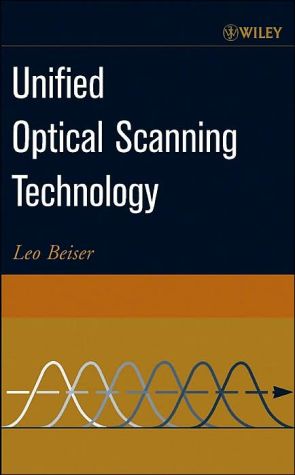Unified Optical Scanning Technology
A cohesive view of the expanding field of optical scanning, in a single compact volume\ Optical scanning is a systematic sampling of spatial information, transforming images or data to or from a temporal signal for electronic processing. The field of optical information handling has been developing rapidly, with many of its classical forms being transformed in new and fascinating ways. For instance, the once-discrete fields of serial and parallel optical information transfer are evolving into...
Search in google:
A cohesive view of the expanding field of optical scanning, in a single compact volumeOptical scanning is a systematic sampling of spatial information, transforming images or data to or from a temporal signal for electronic processing. The field of optical information handling has been developing rapidly, with many of its classical forms being transformed in new and fascinating ways. For instance, the once-discrete fields of serial and parallel optical information transfer are evolving into new hybrid systems as researchers add the flexibility of optical scanning for greater operational advantage in data manipulation and transfer. Insight for such creative advancement is fostered with the unification of unapparent or secluded concepts.Written by an award-winning leader in the field, this is a thoroughly integrated overview of the many facets and disciplines of optical scanning. It brings together scanning theory, scanned resolution, deflection and modulation devices, optical transfer techniques, positional error analysis and control, system architecture, new research, and the unification of complementary or analogous processes, such as active and passive scanning systems. Of particular utility to both practitioner and student are such features as:An overview of the technology and unifying principles, including active and passive scanning, optical transfer, and system architectureIn-depth chapters on scanning theory and processes, scanned resolution, scanner devices and techniques, and the control of scanner beam misplacementA comprehensive review of the government-sponsored research of agile beam steering, now primed for commercial adaptationA unique focus on the Lagrange invariant and its revealing resolution invariant
Preface1Introduction - Technology Overview and Unifying Principles11.1Optical Scanning Characteristics and Disciplines11.2Active and Passive Scanning31.3Input, Output, and Remote Sensing Systems81.4Optical and Resolution Invariants; Optical Transfer91.5System Architecture122Scanning Theory and Processes192.1The Point Spread Function and Its Convolution192.2Quantized or Digitized Scan272.3Gaussian Beam Propagation312.4Scanned Quality Criteria and the Modulation Transfer Function373Scanned Resolution453.1Influence and Significance of Scanned Resolution453.2Aperture Shape Factor503.3The Resolution Equation, the Resolution Invariant, and Beam Propagation543.4Augmented Resolution563.5Resolution in Passive and Remote Sensing Systems614Scanner Devices and Techniques634.1Scanner Technology Organization634.2High-Inertia Scanning654.3Rotating Polygons654.4Holographic Scanners854.5Oscillatory (Vibrational) Scanners1004.6Scanner-Lens Relationships1084.7Low-Inertia Scanning1124.8Acoustooptic Scanners1134.9Electrooptic (Gradient) Scanners1244.10Agile Beam Steering1285Control of Scanner Beam Misplacement1475.1Cross-Scan Error and Its Correction1485.2The Ghost Image and Its Elimination1556Summary - Major Scanner Characteristics1616.1Comparison of Major Scanner Types164References169Index179
\ From the Publisher"It will be of interest to graduate students as well as researchers and engineers." (Optik 117 (2006))\ \








